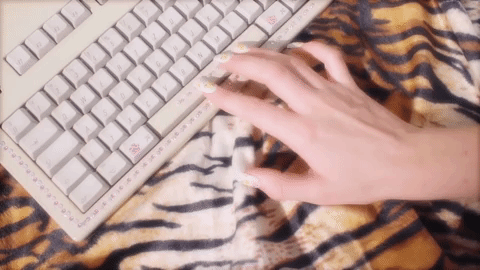To single-space or double-space after a period? Here’s what the science says…

"The rules of spacing have been wildly inconsistent going back to the invention of the printing press. The original printing of the U.S. Declaration of Independence used extra long spaces between sentences. John Baskerville’s 1763 Bible used a single space. WhoevenknowswhateffectPietroBembowasgoingforhere.Single spaces. Double spaces. Em spaces. Trends went back and forth between continents and eras for hundreds of years, Felici wrote.It’s not a good look."
We learned in typing class growing up to put two spaces after a period. No questions asked. Some professors even deducted points for anything more or less than two spaces.
Even work in the 20th century trained us to adopt a two-spaced etiquette on word processors. The double taps on the spacebar mimicked the typewriter which needed the extra spaces after a period to be more pleasing on the eyes.
But then Twitter and mobile phones came along. Tweets required no more than 140 characters. We texted and emailed rapid exchanges to friends, family, and coworkers. One space felt plenty, especially since the font appeared clutter-free. Using two-spaces in text message looked like you were trying to too hard!
What does modern science say about the two-space rule?
The Washington Post reports that three psychology researchers from Skidmore college tested 60 students to test out their spacing inclinations. The majority of the students typed one space after the period. But, when the same students examined text, they read better with two-spaces after the text.
Reading speed only improved marginally, the paper found, and only for the 21 “two-spacers,” who naturally typed with two spaces between sentences. The majority of one-spacers, on the other hand, read at pretty much the same speed either way. And reading comprehension was unaffected for everyone, regardless of how many spaces followed a period.
The major reason to use two spaces, the researchers wrote, was to make the reading process smoother, not faster. Everyone tended to spend fewer milliseconds staring at periods when a little extra blank space followed it.
The science that supports the double space is thus conclusive but not 100% convincing. In practice, we should feel free to to be one spacers or two, but never both. And we should avoid two spaces after a comma at all costs: “Putting two spaces after a comma, if you’re wondering, slowed down reading speed, so don’t do that.”